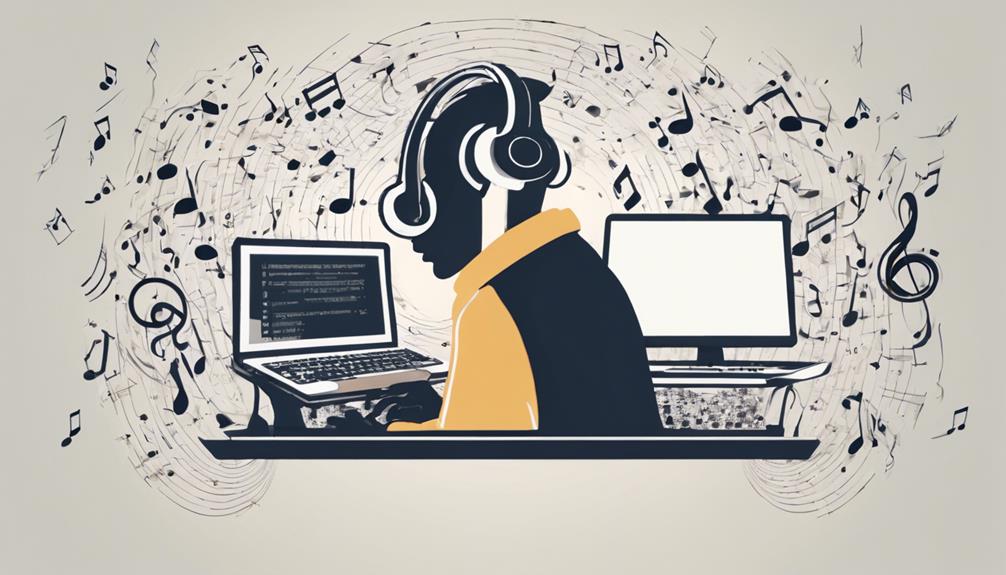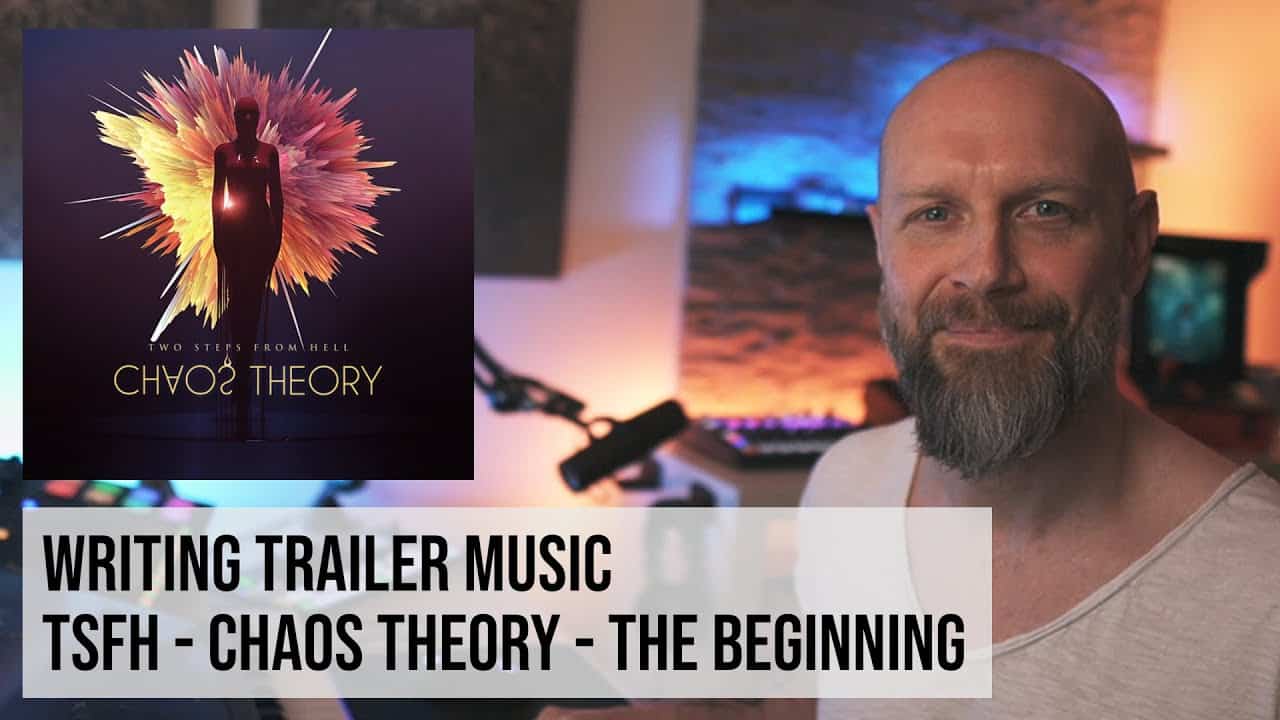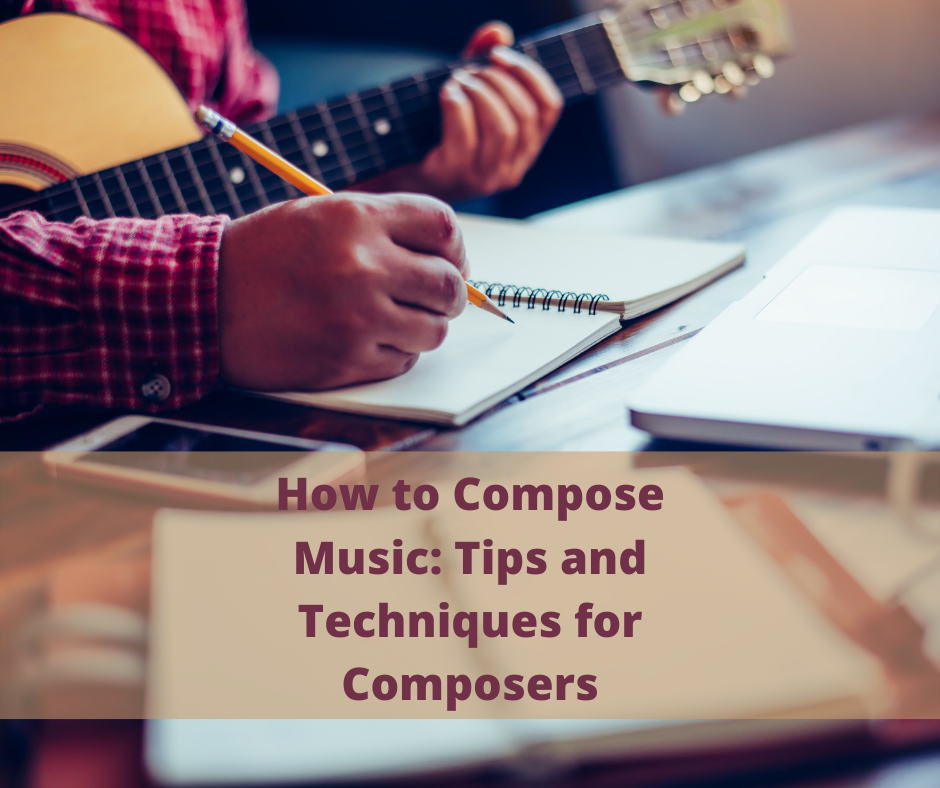Understanding music copyrights is crucial. To determine if songs are copyrighted, look for public domain songs, Creative Commons licenses, or utilize royalty-free music. Public domain songs created before 1926 can be used freely. Creative Commons licenses provide clear guidelines for sharing. Royalty-free music from platforms like Artlist or Soundstripe is a cost-effective option. Assessing copyright status can be simplified with tools such as the Copyright Checker on YouTube. Having a good grasp of music copyright basics can help prevent legal complications. Explore licensing options and permissions. Thorough research on copyright status, proper crediting, and original creations is essential. Embarking on a journey into music copyright is important to protect your creative pursuits.
Key Takeaways
- Utilize PDInfo for song copyright status verification.
- Check songs recorded before 1926 for public domain.
- Understand Creative Commons licensing terms.
- Use royalty-free music sources like Artlist or Soundstripe.
- Proactively check YouTube's Copyright Checker in Creator Studio.
Understanding Music Copyright Basics
Understanding the basics of music copyright is essential for maneuvering the legalities of using songs in various projects. Copyrighted music is protected for 70 years after the creator's death in the US.
To use copyrighted music, permission or a license is required. However, there are exceptions such as songs in the public domain or under Creative Commons licenses. It's important to note that all songs are copyrighted by default unless specified as public domain or free.
Copyright holders have control over how their music is used, which is why obtaining a synchronization license is necessary for projects like films or advertisements. In cases where commercial music isn't feasible, royalty-free music provides a cost-effective solution.
Identifying Public Domain Songs
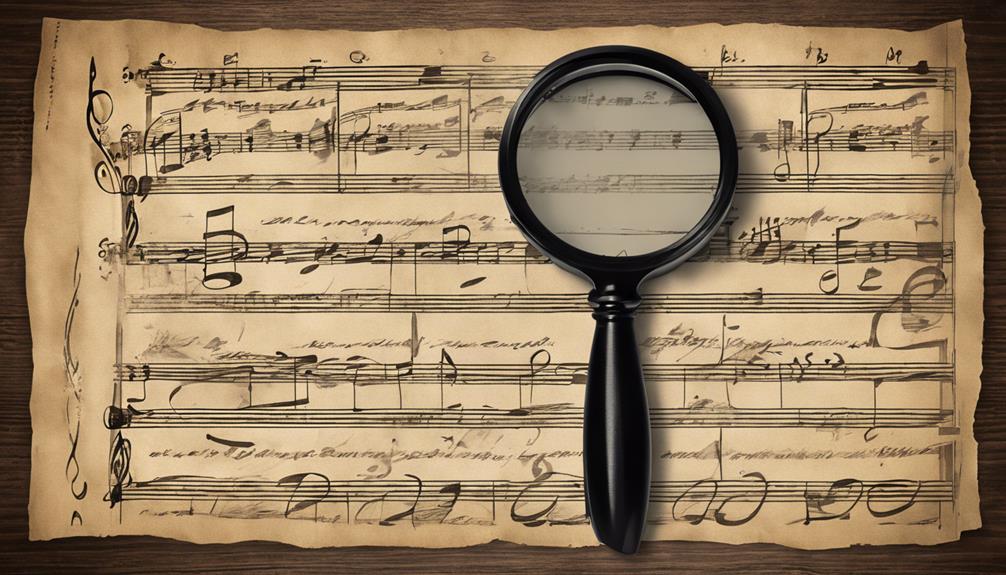
When searching for public domain songs, one can consult resources like PDInfo to easily identify songs free from copyright restrictions.
Public domain songs, generally recorded before 1926, offer a wide selection of music for various projects without the need for licensing or permission.
By identifying public domain songs, one guarantees compliance with copyright laws, allowing for worry-free usage. These songs can be freely used, providing a solution for those seeking to avoid legal constraints associated with copyrighted music.
PDInfo serves as a valuable tool in checking if songs are copyrighted, making it easier for creators to find music that's legally safe to use.
Embracing public domain songs opens up a world of possibilities for innovative projects without the worry of infringing on copyright laws.
Exploring Creative Commons Licensing
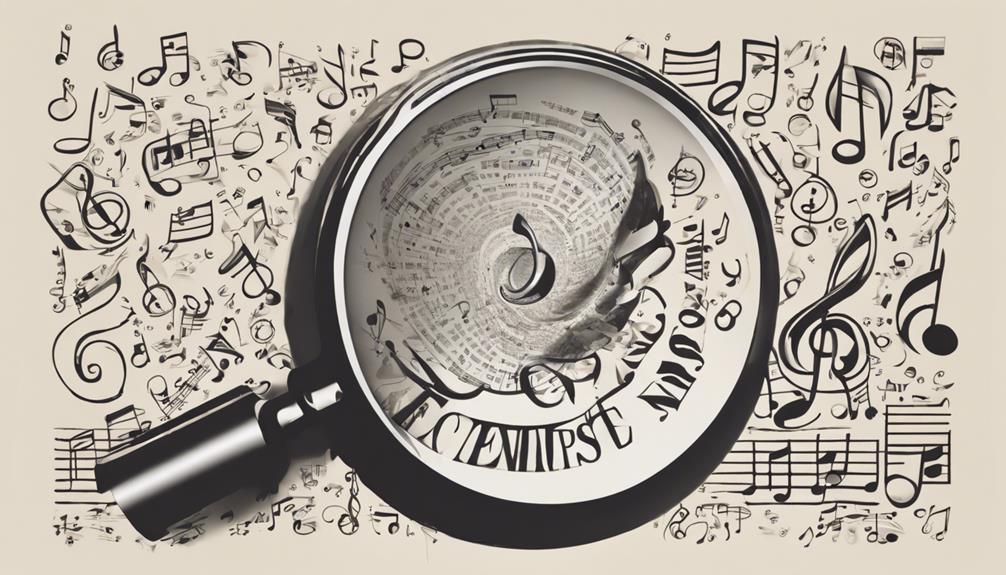
Exploring Creative Commons Licensing opens up a world of possibilities for creators to utilize and share their work under specific conditions determined by the licenses they choose. Creative Commons licenses offer a way for artists to make their music available for free use while maintaining some control over how it's shared. By understanding the terms of a Creative Commons license, creators can guarantee their work is used appropriately and avoid copyright issues. These licenses come with different conditions, such as requiring attribution or prohibiting commercial use, giving artists the flexibility to choose what works best for them.
When searching for music, platforms like CC Mixter or Free Music Archive provide a plethora of Creative Commons music options. It's noteworthy that just because a song is free to use under a Creative Commons license doesn't mean it's in the public domain. Understanding these distinctions is essential to avoid inadvertently infringing on copyrighted material, especially with the rise of Content ID systems that can flag unauthorized use. By utilizing Creative Commons licenses, creators can share their music with the world while maintaining control over how it's used.
Utilizing Royalty-Free Music Sources
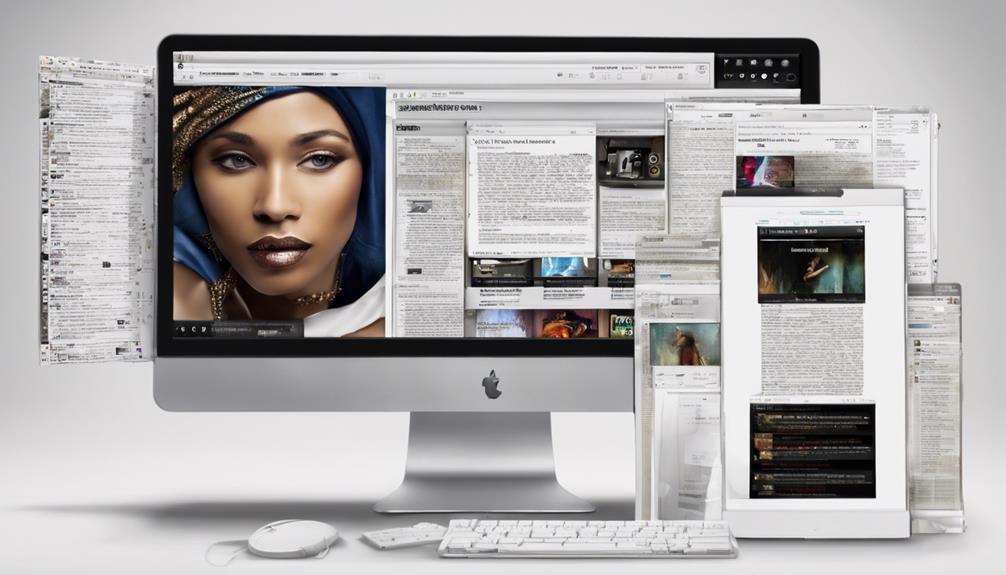
Royalty-free music sources offer a convenient solution for content creators seeking cost-effective and legally compliant music options. These platforms, such as Artlist and Soundstripe, provide a wide range of high-quality tracks for use in various projects like YouTube videos. By paying a one-time fee or subscribing to these services, creators can access music without worrying about ongoing royalty fees. This not only saves money but also guarantees legal compliance and peace of mind regarding copyright issues.
Utilizing royalty-free music simplifies the process of finding suitable soundtracks for videos while avoiding the complexities of music licensing and potential copyright infringements. With diverse music options available, creators can enhance their content without the risk of using copyrighted music. Platforms like Artlist and Soundstripe offer extensive catalogs that cater to different tastes and video styles, making it easier for content creators to find the perfect music for their projects. By utilizing these royalty-free sources, creators can focus on their content creation with the confidence of legal compliance and affordability.
Checking Copyright Status on YouTube
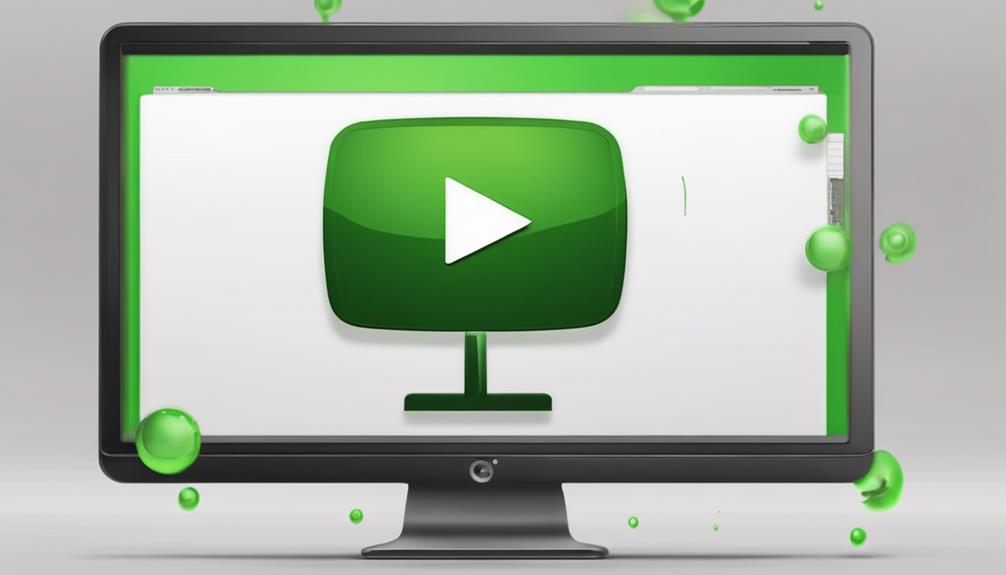
To determine the copyright status of songs used in videos on YouTube, we can utilize the platform's Copyright Checker in Creator Studio. This tool helps creators identify if the music they intend to use is copyrighted.
Uploading videos as 'private' or 'hidden' can also aid in checking for copyright status before public sharing on YouTube. It's vital to acknowledge that all songs on platforms like YouTube are generally assumed to be copyrighted unless specified otherwise. Acquiring the necessary rights or licenses is essential for using copyrighted music in YouTube videos to avoid potential legal issues.
Additionally, checking for copyright marks in file names or information can indicate whether a song is copyrighted or not. By being proactive and utilizing these tools and techniques, content creators can ensure they're compliant with copyright laws when incorporating music into their videos on YouTube.
Ensuring Compliance on Social Media Platforms
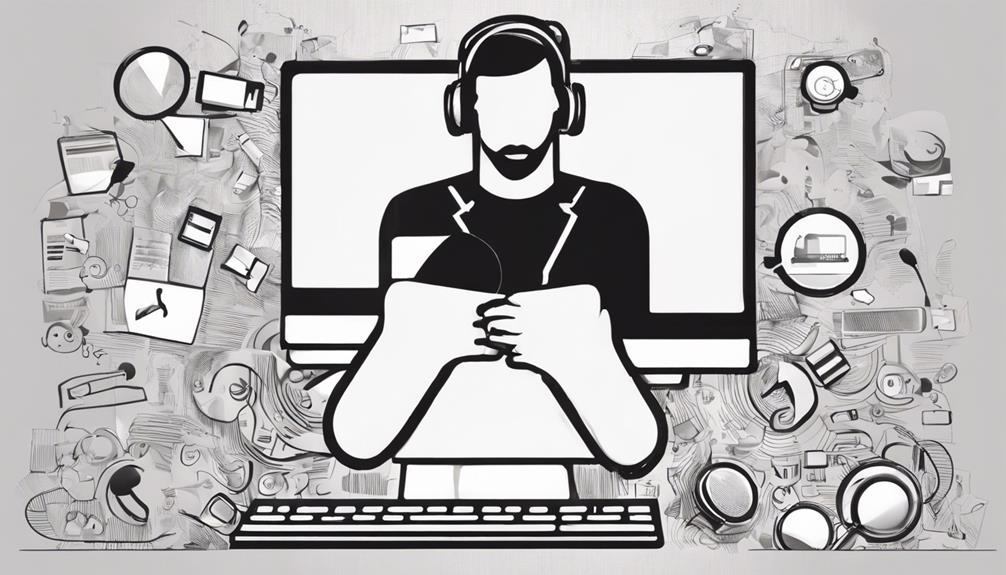
Social media platforms have strict guidelines regarding the use of copyrighted music, with automated systems in place to detect violations. Adhering to these guidelines is essential to avoid penalties such as strikes, takedown warnings, or muted audio on your content.
Copyrighted Music Use
How do social media platforms guarantee compliance with music copyright laws regarding the use of copyrighted music?
Platforms like YouTube, Instagram, and Facebook employ automated systems to scan videos for copyrighted music. Twitch offers a library of Twitch-cleared music to uphold copyright laws for streamers.
Using copyrighted music without permission can lead to strikes, takedown warnings, or muted audio in videos. Automatic copyright checkers make it challenging to infringe copyrights on these platforms.
To uphold compliance, creators can utilize tools like YouTube Creator Studio's Copyright Checker. When using a song in videos, consider public domain tracks, licensed music, or royalty-free options. Be sure to include relevant information in the video description to acknowledge the music source properly.
Platform Guidelines Adherence
Platform guidelines compliance on social media platforms is essential for creators to avoid copyright violations and maintain a positive online presence. Here are four key points to keep in mind when managing copyrighted music on social media platforms:
1) Understand the automated systems: Platforms like YouTube and Twitch have tools that flag copyrighted music in videos.
2) Explore Twitch-cleared music: Twitch offers a library of music that streamers can use without infringing on copyrights.
3) Be aware of consequences: Violating platform guidelines can lead to strikes, takedown warnings, muted audio, revenue loss, and more.
4) Utilize permission tools: Automatic copyright checkers make it challenging to use copyrighted music without proper authorization, so consider using video blocks or seeking permission.
Consequences of Using Copyrighted Music
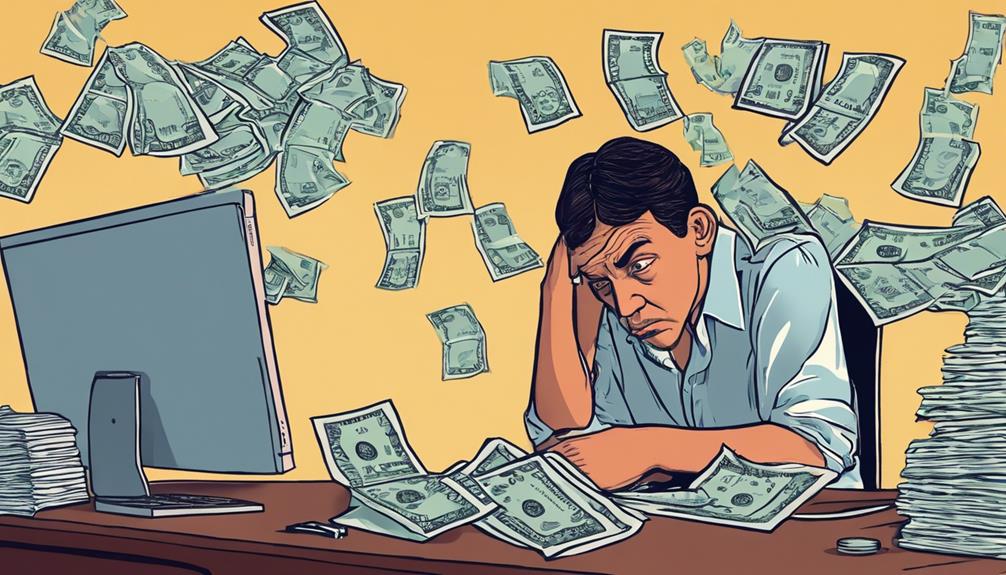
Using copyrighted music without permission can have significant repercussions for content creators. When incorporating copyrighted music into videos on platforms like YouTube without the necessary permissions, creators risk facing copyright strikes, leading to video takedowns, muted audio, or the loss of monetization opportunities.
Automated systems employed by social media platforms can quickly detect copyrighted music within content, triggering these consequences. Additionally, the legal implications of using copyrighted music unlawfully can result in fines or penalties, impacting creators both financially and reputationally.
To avoid these issues, it's essential for content creators to understand the implications of utilizing copyrighted music and take proactive measures to secure the appropriate permissions or seek out royalty-free alternatives. By respecting copyright laws and utilizing music responsibly, creators can safeguard themselves from the negative ramifications associated with unauthorized use of copyrighted material on digital platforms.
Frequently Asked Questions
How Do You Easily Check if Song Is Copyrighted?
When determining if a song is copyrighted, we suggest checking various platforms like YouTube or Spotify. Uploading content as 'private' or 'hidden' can aid in the process. It's essential to assume all songs are copyrighted unless stated otherwise.
Acquiring rights to use copyrighted music is vital to avoid legal issues. Look for copyright marks in file names or information, which can indicate copyrighted material.
How Do I Make Sure a Song Is Not Copyrighted?
To guarantee a song isn't copyrighted, we recommend checking for public domain status or Creative Commons licenses. Always assume songs are copyrighted unless stated otherwise.
Look for copyright marks in the file name or metadata. Utilize YouTube's Content ID system for verification. Obtain proper permissions to use copyrighted songs legally.
This approach safeguards against unintentional copyright infringement and ensures compliance with intellectual property laws.
How Do You Test for Copyright?
When testing for copyright, we recommend utilizing platforms like YouTube's Content ID system to check the status of songs. Assume all songs are copyrighted unless explicitly stated otherwise. Obtain proper rights and permissions to avoid infringement.
Before sharing content, upload it as 'private' or 'hidden' to conduct checks. Always respect creators' intellectual property rights by seeking permission and using licensed music to stay compliant with copyright regulations.
At What Point Is a Song Copyrighted?
At what point is a song copyrighted?
A song is copyrighted as soon as it's created and fixed in a tangible form. Copyright protection is automatic and lasts for the creator's life plus 70 years.
It's essential to assume all songs are copyrighted unless marked otherwise. Utilize tools like YouTube's Content ID system to check a song's copyright status before using it.
Always respect intellectual property rights to avoid legal issues.
Conclusion
To sum up, when traversing the world of music copyright, remember to always be vigilant and confirm the legality of the songs you use.
By grasping the basics of music copyright, exploring public domain and Creative Commons options, and utilizing royalty-free sources, you can guarantee compliance and avoid consequences.
So, stay safe, stay savvy, and remember to rock on with rights-respecting tunes!

